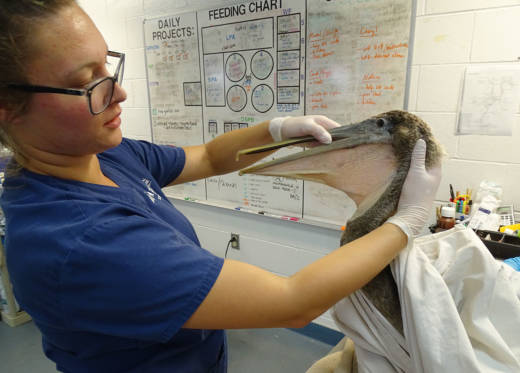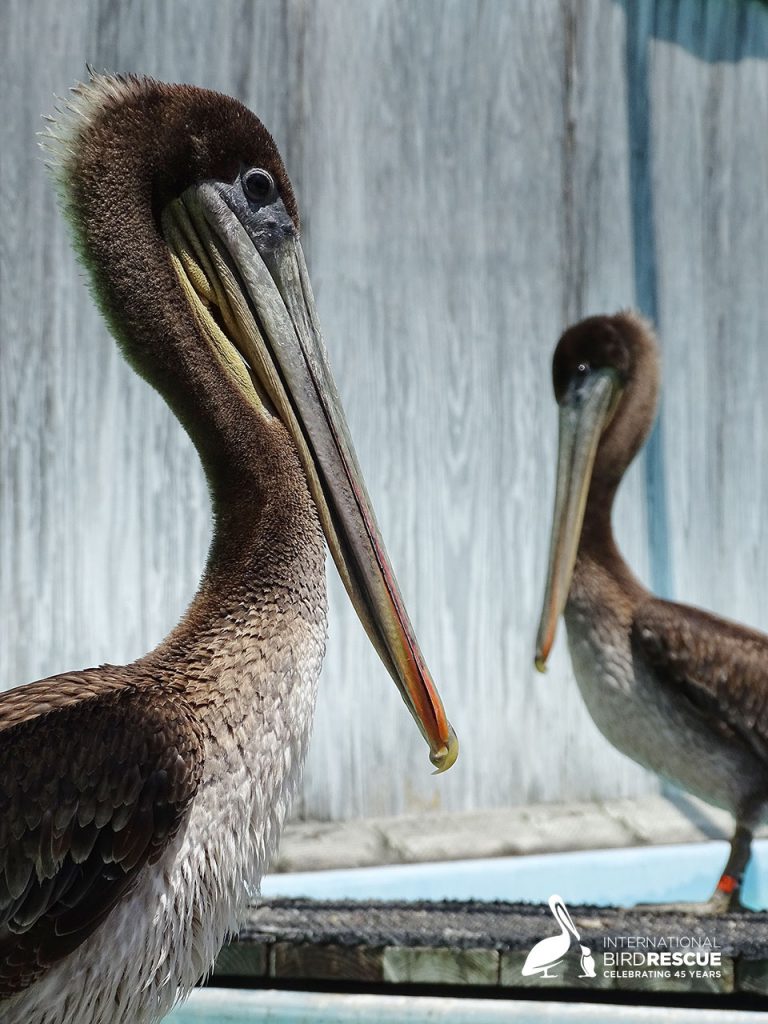The number of sick and dying brown pelicans turning up along the Southern California coast has surged in the past week, according to the wildlife organization International Bird Rescue.
More than 30 pelicans have been brought to the organization's wildlife rehabilitation center in Los Angeles. In a blog post, the organization said that the number of sick pelicans had more than doubled in just a few days. The big birds are showing signs of emaciation, hypothermia and anemia. The reason for the uptick is unknown.
It's normal to receive recently fledged baby pelicans this time of year, but the current wave of sick birds includes many second-year pelicans, said Kylie Clatterbuck, the center's manager.
The organization said there have been many cases of pelicans landing on city streets, residential yards and airport runways. A well-publicized incident occurred April 28 when two pelicans landed at Pepperdine University's graduation ceremony in Malibu, causing an uproar.

